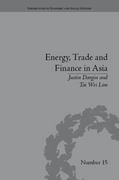ANSWER. the attached questions below.
QUESTION 1 a) State the Population Regression Model (Enter the variable name mnemonics using ordering used in problem description) = Bo + B1 + B2 + B3 + B4 + E QUESTION 2 b) State the Estimated Regression Model (Use 3 decimal places for coefficients and mnemonics for variable names and order from question description). Enter answers as Coefficient*Mnemonic NOT Mnemonic*Coefficient -hat = + * + * + * +Confidence Intervals. IID SAMPLES FROM NORMAL DISTRIBUTION (exact t CI) 1. Independent and identially distributed normal random variables Xi, i s n are selected from a normal distribution having unknown mean a and standard deviation o > 0. We say (Xi} are IID N( p, o ). An exact t-confidence interval for p has performance claim PLHE X + ((conf, DF) Sx / Vn ) = conf for every n > 0. a. Use the t-table to evaluate t(conf, DF) for conf = 0.95 n = 4 b. For data having X =73.3 5x = 24.2 give numerical expressions (leave them unreduced) for LCL (lower end of.95 Cl for p) = UCL =(upper end of .95 Cl for p) = c. If 10,000 experimenters were each to select their own sample of 4 from this same normal population, each experimenter calculating their own confidence interval according to the recipe above, around how many of the 10,000 would have their CI cover the true p?2. Based on your advice, the marketing students in # 1 conduct another study of the impact of Krash Cola. You've suggested they modify their study design to use a matched sample to examine the relationship between midterm performance and Krash Cola consumption. They do so and return to you for help in the analysis. (You will find the results in the same excel file you opened for the last problem, but in the third worksheet - called Topic 3 - # 2.) a) What's the difference between a study which uses a matched sample design and one which uses an independent sample design? In the case of Krash Cola, why might you propose a matched sample study design? b) Specify the null and alternate hypotheses that you would use, such that if you reject the null you're concluding Krash, Cola does work. c) What's your point estimate of the average difference between the scores people got when they drank Krash Cola beforehand and the scores they got when they had not drank Krash Cola before hand? d) Perform a hypothesis test, for a level of significance = .1. Find and interpret the p- value, and decide whether or not you can reject the null hypothesis. e) Does your answer for this problem agree with your answer for #1? Would you expect it to? To what do you attribute any differences? Which result would you trust more and why?Since the materials may be a bit difficult, this first question on the Solow model is meant to walk you through it as a review. The Solow model begins with a constant-returns production function, Y = F(K, L). From this production function, we derive the per-worker version of it: y = f (k). where y = Y/L is the output per worker and & = K/L is the capital per worker. In this transformation, we assume that f (4) = F(k, 1). Since labor L is assumed to be fixed, 4 =0. Using the relation Ay AY AL y L we conclude that the growth rate of output per worker is the same as the growth rate of total output. We are interested in how capital accumulation relates to economic growth. We need the following equation to describe the dynamics of capital, the so-called law of motion of k: Ak = i -5k, where & is investment per worker and & is the depreciation rate of capital. We focus our analysis on the steady states where capital per worker is constant, i.e., Ak = 0. (a) State the condition for steady state. In a steady state, what are the growth rates of output per worker and total output? (b) Show in a graph with production function, investment function, and depreciation the steady-state level of capital per worker, *, and output per worker, y". (c) There is a change in climate in Country A so that the depreciation rate of capital increases from o to 8. Show in a graph how this would affect the steady-state level of capital. (d) Suppose that labor is now growing at the rate of n so that 4 = n. State the condition for steady state. In a steady state, what are the growth rates of output per worker and total output










